Introduction to Lasagna
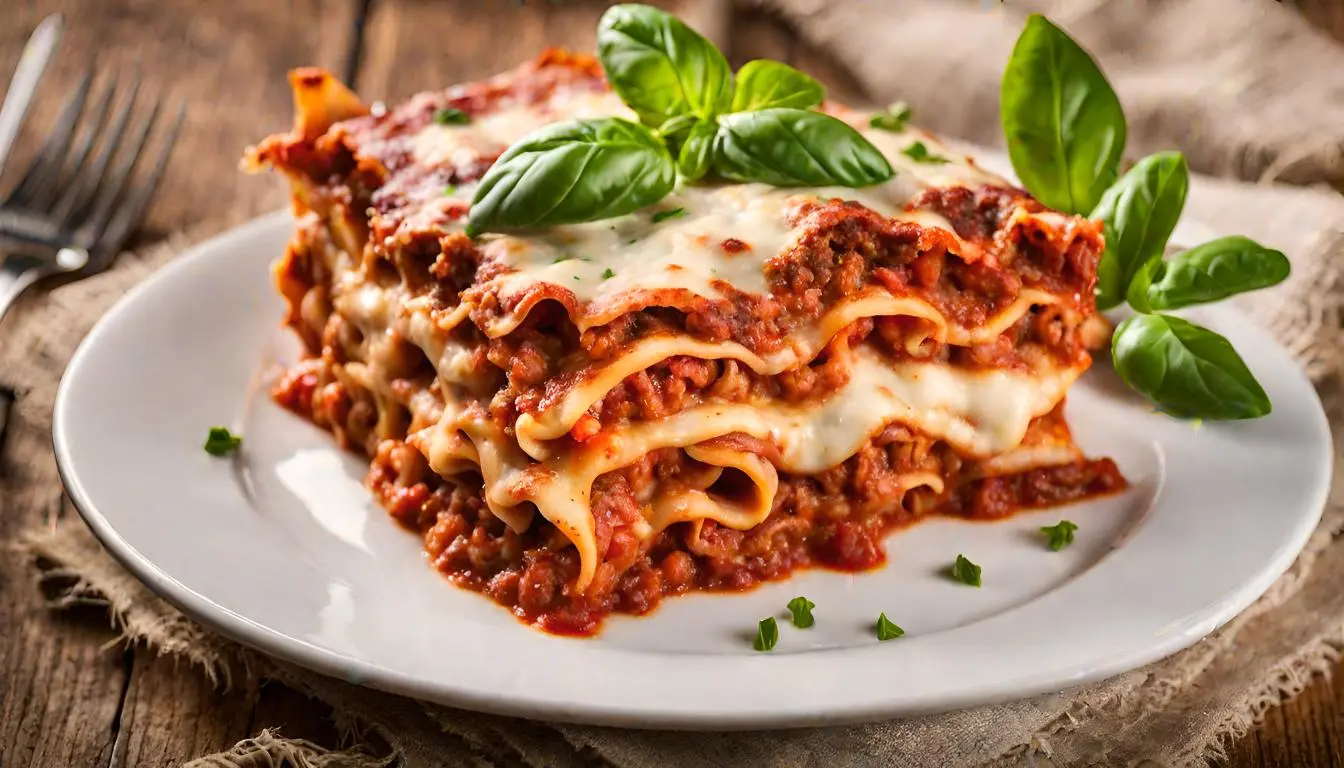
Lasagna, that quintessentially Italian dish, has a way of bringing people together, filling the air with its rich aroma and the table with eager anticipation. Yet, there’s a fine line between a lasagna that’s sumptuously soft and one that’s disappointingly crispy. In this comprehensive guide, we’ll embark on a culinary journey to ensure your lasagna stays on the right side of that line. From the storied layers of pasta, cheese, and sauce to the nuances of baking, we’ll cover it all. So, roll up your sleeves and let’s dive into the art of crafting the perfect lasagna.
Overview of Lasagna
Lasagna, oh lasagna! A dish that’s as fun to eat as it is to say. With its roots deeply planted in Italian soil, lasagna has twirled its way into the hearts of food lovers worldwide. It’s a dish that tells a story, a layered narrative of pasta, cheese, and sauce, each ingredient playing its part in the grand ensemble. But, as with any classic tale, there’s a twist: not everyone knows how to keep it from turning into a crispy saga.
Common Challenges in Lasagna Preparation
Now, let’s talk turkey—or should we say, pasta? Making lasagna isn’t rocket science, but it does have its pitfalls. Ever pulled a tray out of the oven only to find the edges as crisp as autumn leaves? Or worse, the top layer looking more like a desert than a delectable dish? You’re not alone. The culprits often lurk in the shadows: overcooking, the choice of ingredients, and the layering technique. But fear not! We’re here to shine a light on these common missteps and guide you to lasagna greatness.
So, whether you’re a seasoned chef or a novice in the kitchen, stick around. We’re about to unravel the mysteries of making a lasagna that’s just right—soft, succulent, and oh-so-satisfying. Let’s turn the page on crispy lasagna woes and start our story of culinary success.
Ingredients and Preparation:
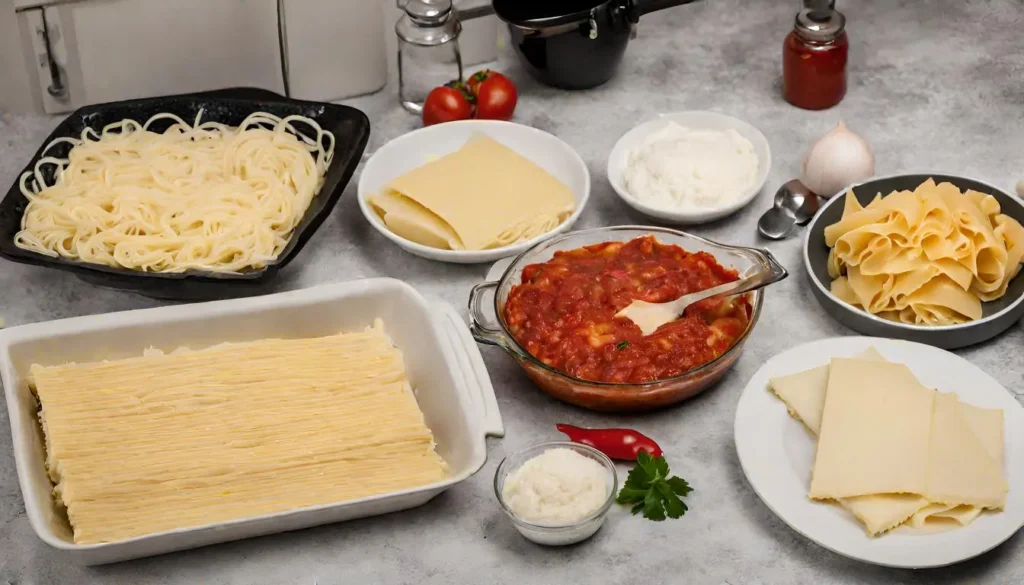
Choosing the Right Ingredients
The cast of characters in our lasagna tale is crucial. Each ingredient plays a pivotal role, and getting them right is half the battle. Let’s start with the pasta. Fresh or dry, the choice is yours, but remember, the pasta is the backbone of this dish. Fresh pasta can elevate your lasagna to new heights, offering a tender bite that’s hard to achieve with its dry counterpart. Yet, dry pasta isn’t without its charms, especially if you’re seeking that al dente texture.
Cheese, glorious cheese! It’s what gives lasagna its soul. A trifecta of Ricotta, Mozzarella, and Parmesan can do wonders. Ricotta adds creaminess, Mozzarella brings the melt, and Parmesan packs a flavorful punch. Each cheese has its role, creating a symphony of flavors that sing in harmony with every bite.
And then there’s the sauce. A robust tomato-based sauce brings acidity and brightness, cutting through the richness of the cheese. For those who prefer a creamier touch, a silky béchamel sauce might just be your ticket to lasagna paradise. The choice of sauce can set the tone for your lasagna, so choose wisely.
Cooking Techniques:
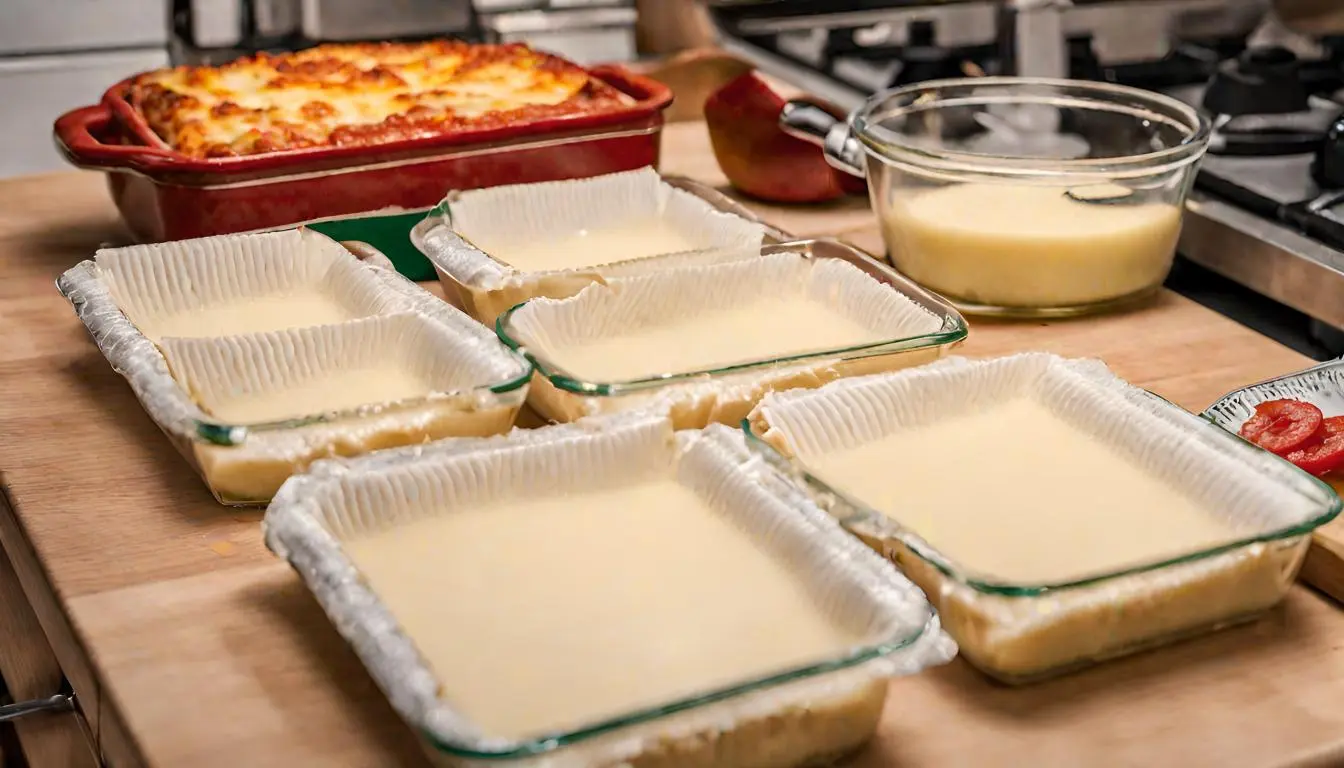
Prepping your lasagna is like setting the stage for a grand performance. The question of to boil or not to boil the pasta often arises. If you’re using fresh pasta, a quick dip in boiling water can be beneficial, but be wary of overcooking. For dry pasta, some swear by pre-boiling for that perfect texture, while others layer it straight from the box, letting the oven do the work.
Assembling your lasagna is where the magic happens. Think of it as building a house, layer by layer. Start with a base of sauce to prevent sticking, then pasta, followed by cheese, and repeat. The order isn’t set in stone, but a balanced approach ensures each layer melds together in perfect harmony, without any one ingredient overpowering the others.
Balancing the moisture content is akin to walking a tightrope. Too much sauce and your lasagna might turn into a soupy affair, too little and you risk the dreaded crispiness. The key is to find that sweet spot, where all the ingredients come together in a moist, cohesive whole.
In this act of our lasagna saga, we’ve laid the groundwork with the right ingredients and prep techniques. But the plot thickens as we move on to the cooking techniques that can make or break our lasagna masterpiece. Stay tuned, as we continue to unravel the secrets to achieving that perfect, non-crispy lasagna.
Oven Temperature and Cooking Time
The oven, our lasagna’s stage for its final act, where timing and temperature play the lead roles. Finding the sweet spot for your oven temperature is crucial. A moderate heat, around 375°F (190°C), is often the golden ticket, allowing the lasagna to cook through without turning the top into a crunchy crust. But remember, all ovens have their quirks, so getting to know yours can make all the difference.
The plot thickens when we consider cooking time. Too little, and your masterpiece is undercooked; too much, and you’re back to the crispy conundrum. Generally, a lasagna needs about 45 minutes covered, plus a brief encore uncovered to achieve that desirable bubbly top without overdoing it.
Covering Techniques to Prevent Crispiness
Ah, the art of covering! It’s like a protective spell against the curse of crispiness. Using aluminum foil to cover your lasagna while it bakes is like sending it into battle with armor. It shields the top from direct heat, allowing the middle to cook without the top layer drying out. Just remember, the final act should be performed without the foil, letting the top achieve a gentle, golden hue.
But when to unveil your lasagna from its foil cloak? Timing is everything. As a rule of thumb, remove the foil in the last 10-15 minutes of baking. This brief exposure to the elements allows the top to achieve a slight crispness, a textural contrast to the soft, succulent layers beneath, without crossing over to the land of the overly crispy.
Resting After Baking
And now, for the grand finale: the resting period. This often-overlooked step is where the magic truly happens. Allowing your lasagna to rest for about 15 minutes after baking is like giving it a moment to collect itself after its oven ordeal. It’s during this time that the layers settle, the flavors meld, and the entire dish finds its coherence, making it easier to cut and serve.
This resting period isn’t just about practicality; it’s a transformative phase that ensures each layer of your lasagna is distinguishable, yet part of a harmonious whole. It’s the difference between a good lasagna and a great one.
In this act, we’ve navigated the treacherous waters of oven temperature, cooking time, and the protective practices of covering our dish. With these techniques in your culinary repertoire, the specter of a crispy lasagna will haunt your kitchen no more. But our journey doesn’t end here. Stay tuned as we delve deeper into the advanced tips and tricks that can elevate your lasagna from merely good to truly sublime.
Advanced Tips and Tricks:
Moisture Management
In the realm of lasagna making, mastering the element of moisture is akin to wielding culinary magic. It’s all about balance—ensuring each layer contributes to a moist, cohesive whole without tipping into soggy territory. Start by scrutinizing your sauce; it should be hearty but not watery. A thick, rich sauce acts as the glue holding your masterpiece together, enveloping the pasta and cheese in a warm embrace.
But what if the scales tip too far, and you find yourself staring down a watery lasagna? Fear not, for there are tricks to tame the tide. Consider adding an egg to your ricotta cheese mixture; it acts as a binder, helping to firm up the filling. Alternatively, a sprinkle of breadcrumbs or grated Parmesan between layers can work wonders, absorbing excess moisture without compromising flavor.
Layering Strategies
Ah, the art of layering —a process where strategy and creativity collide. The traditional blueprint calls for a base of sauce, followed by pasta, more sauce, a cheese mixture, and repeat. But within this framework lies room for innovation. Think of your lasagna as a canvas, each layer an opportunity to add depth and dimension.
The number of layers is a matter of personal preference, but a lasagna with at least three to four layers strikes a delightful balance between hearty and manageable. Remember, each layer adds height and heft, so consider the depth of your baking dish and the appetites of your audience.
Distributing ingredients evenly is the key to a harmonious lasagna. Ensure each layer of pasta is covered with just the right amount of sauce and cheese, avoiding the perils of dry edges or a top-heavy construction. It’s this meticulous attention to detail that transforms a good lasagna into a culinary masterpiece, each bite a testament to your layering prowess.
In this chapter of our lasagna saga, we’ve ventured into the advanced realms of moisture management and layering strategies, arming you with the knowledge to craft a dish that’s a symphony of flavors and textures. But even the most seasoned chefs know that the path to perfection is fraught with pitfalls. Join us as we continue our journey, exploring the common mistakes that befall many a lasagna maker and, more importantly, how to avoid them.
Common Mistakes and How to Avoid Them:
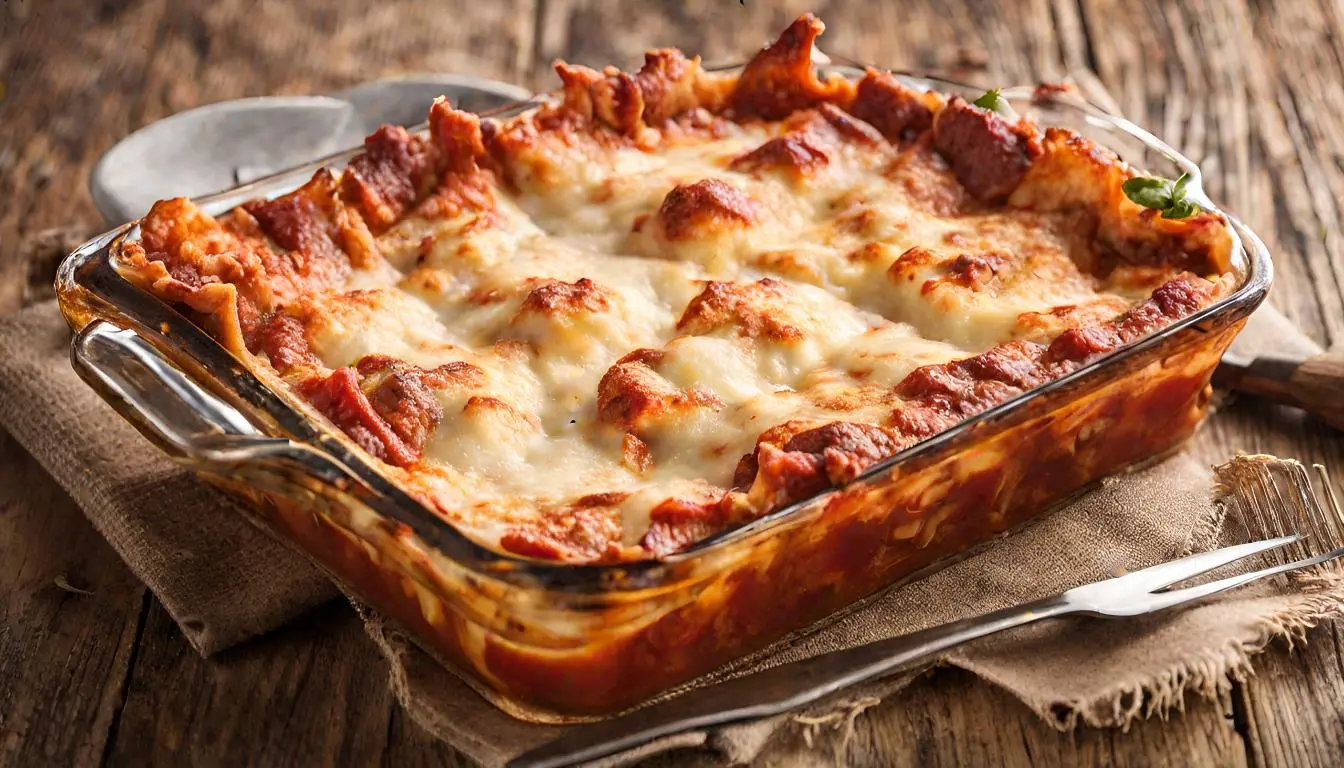
Overcooking the Pasta
One of the cardinal sins in lasagna making is overcooking the pasta. Whether you’re using fresh or dry noodles, they should be just shy of al dente before they hit the oven. Remember, they’ll continue to cook amidst the bubbling sauce and melting cheese, so starting with soft noodles is a recipe for a mushy mess.
For those using dry noodles, consider this: some brands offer “oven-ready” options that require no pre-boiling, a boon for busy chefs. But if you’re partial to the traditional boil, a quick dip in salted water—just enough to soften them slightly—is all you need. This way, they retain their bite, providing a pleasing texture against the soft layers of cheese and sauce.
Incorrect Layering
Layering your lasagna without thought or care can lead to a dish that’s less than the sum of its parts. A common faux pas is skimping on the first layer of sauce at the bottom of your baking dish. This foundational layer is crucial, acting as a barrier that prevents the pasta from sticking and burning.
Another layering lapse is uneven distribution of ingredients, leading to a lasagna that’s dry in some spots and soggy in others. Each layer of pasta should be lovingly coated with sauce and cheese, ensuring every bite is as good as the last. And don’t forget to cover the top layer of pasta completely with sauce and cheese, shielding it from the harsh heat of the oven and preventing it from turning into a crispy relic of what could have been a succulent masterpiece.
In the grand tapestry of lasagna making, these common mistakes are but minor threads that, when addressed, contribute to the creation of a dish that’s both visually stunning and delectably satisfying. By heeding these warnings and embracing the techniques shared, you’re well on your way to crafting a lasagna that will be remembered not for its flaws, but for its perfection.
As we wrap up this section, remember that the journey to lasagna mastery is one of trial, error, and triumphant success. Each attempt brings you closer to the ideal, and with these tips in your culinary arsenal, you’re equipped to tackle the challenge head-on. Stay tuned for our next installment, where we’ll delve into the frequently asked questions that puzzle many a home cook, demystifying the process and paving the way for your lasagna to take center stage at the dinner table.
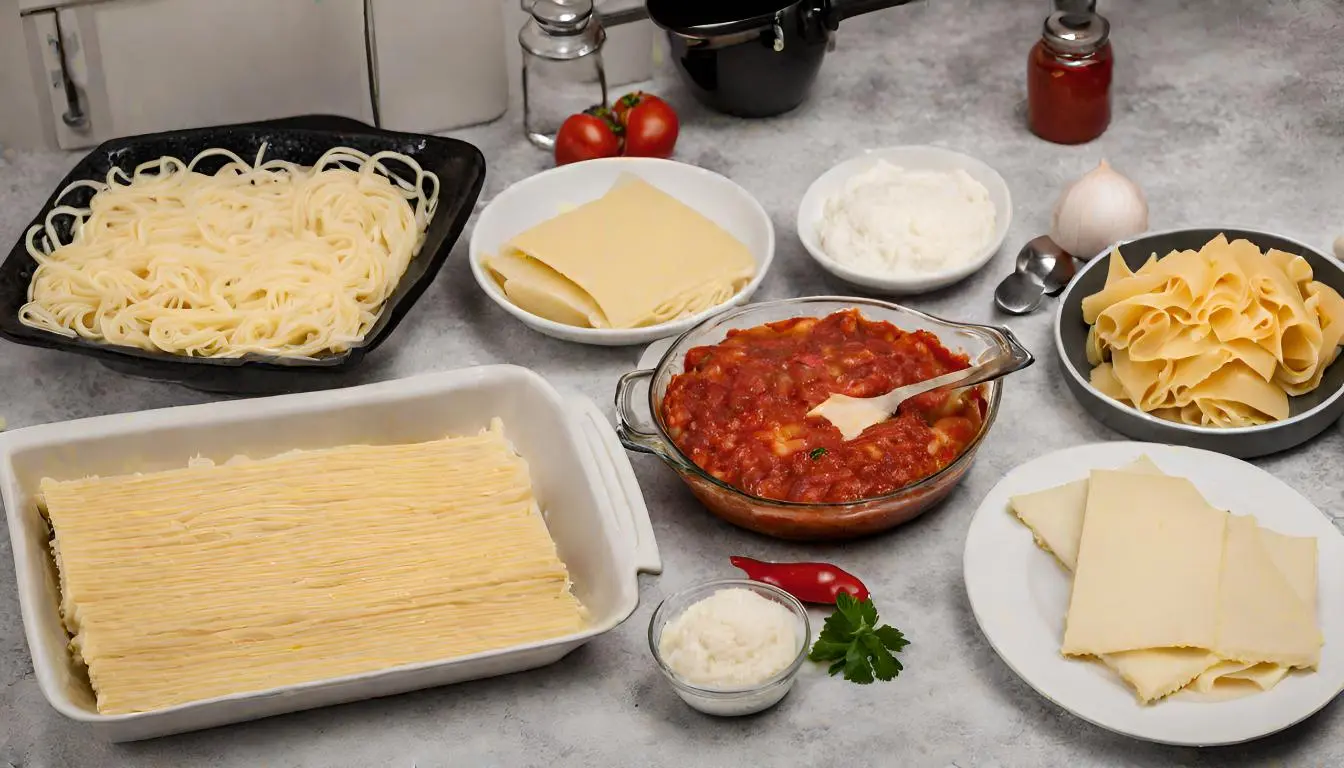
Way cool! Some very valid points! I appreciate you writing this
write-up and also the rest of the site is also really good.
thank you so mush